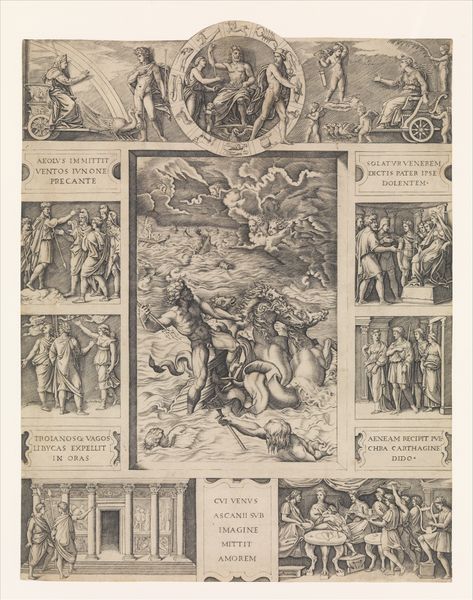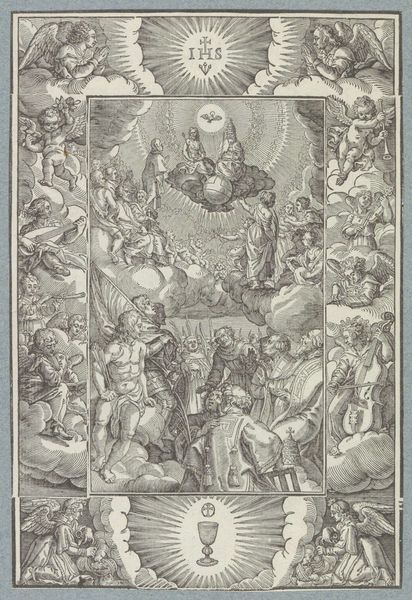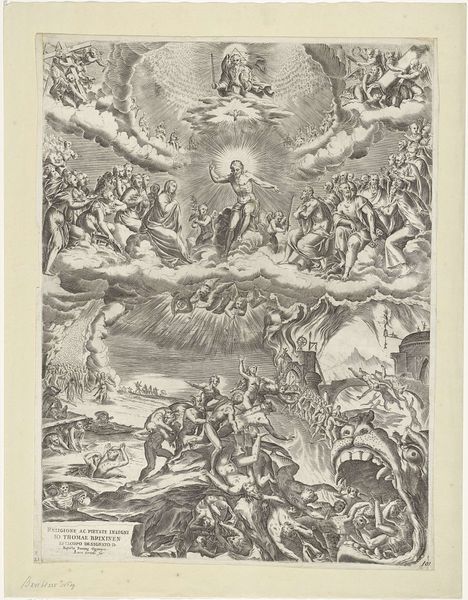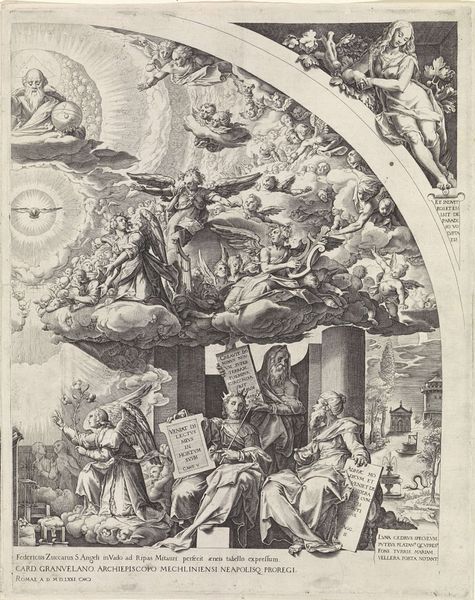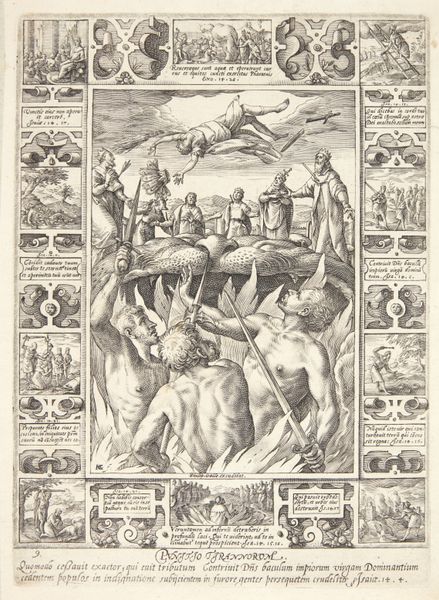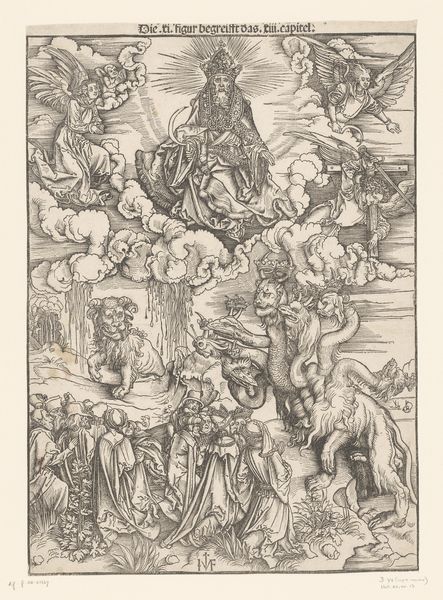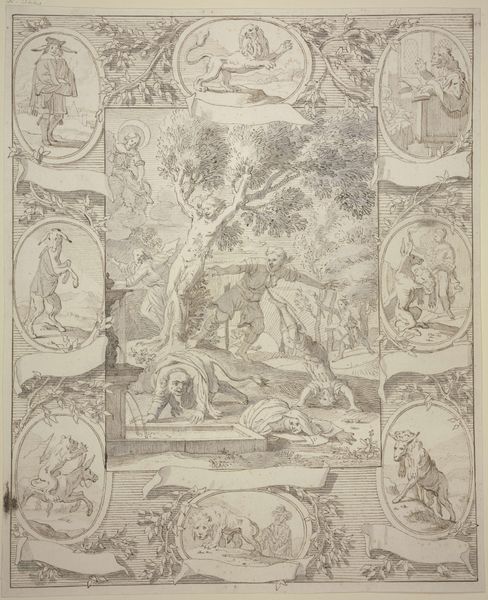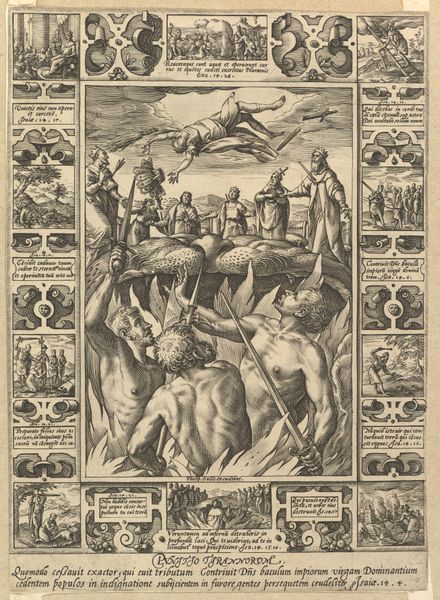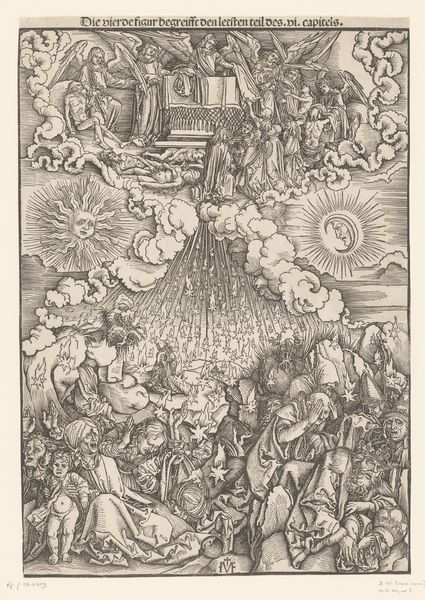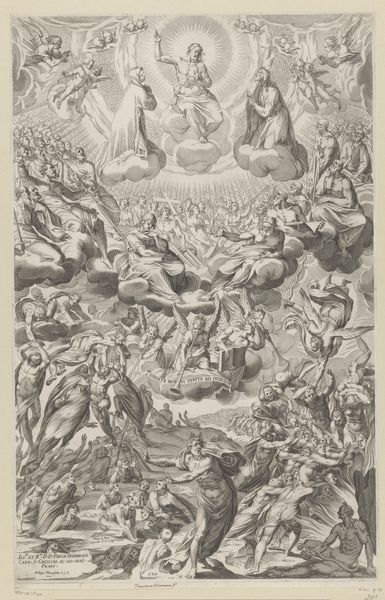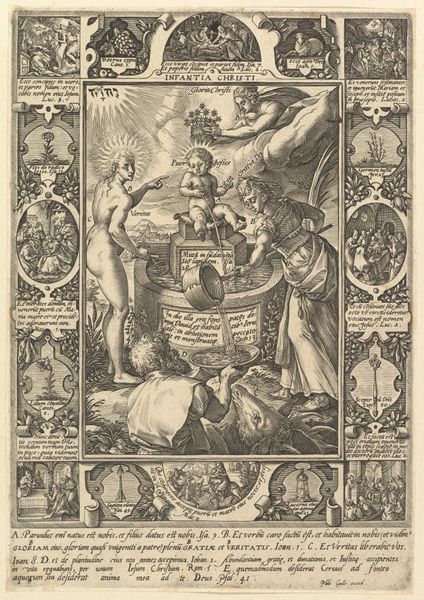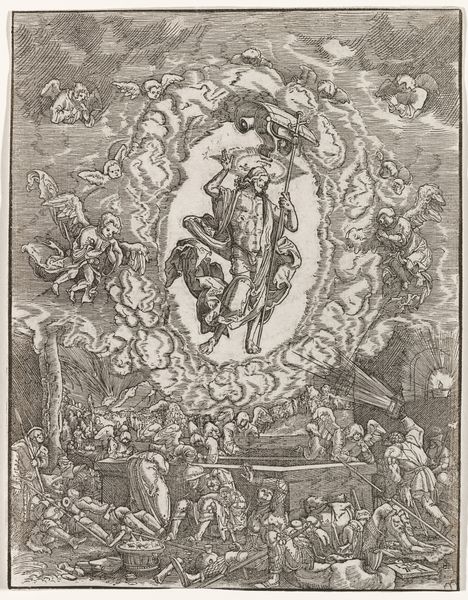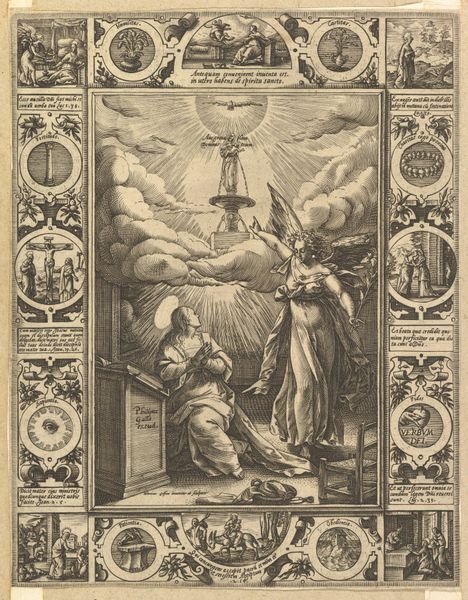
Tweede reglement van de Orde van H. Franciscus van Assisi 1608 - 1626
0:00
0:00
print, engraving
#
narrative-art
#
baroque
#
pen drawing
# print
#
line
#
history-painting
#
engraving
Dimensions: height 409 mm, width 296 mm
Copyright: Rijks Museum: Open Domain
Editor: So, this is "Tweede reglement van de Orde van H. Franciscus van Assisi," made between 1608 and 1626 by Claude Mellan. It’s currently held in the Rijksmuseum, and it looks like an engraving or print. The detail is just amazing! I’m struck by how much information Mellan packs into a single image, and the bordering vignettes give a strong sense of sequential narrative. How do you see this piece, considering its time and materials? Curator: What immediately catches my attention is the labour involved in creating this print. Look closely. Engraving requires meticulous skill, and each line, each shade, represents hours of work. This wasn’t just a product of artistic inspiration but of skilled labour within a specific economic context. The question isn't just "what" is depicted but "how" it was made and consumed. Who commissioned it, and for what purpose? These prints often served didactic functions or acted as propaganda for the Church. Editor: That’s fascinating. So, instead of just seeing religious scenes, we should also think about the means of production and how that might have influenced its reception? Curator: Precisely! Consider the paper itself. Paper was a valuable commodity. Its use signifies a level of economic investment in disseminating these religious ideas. Also, the use of line engraving connects it to a broader culture of printmaking and information sharing. Do you think the relative affordability of prints played a role in its broader social impact? Editor: Absolutely! Prints could reach a wider audience than paintings. So, the labor-intensive process, the valuable paper, the context of religious messaging... it all points to the power dynamics at play during that time. It's not just art; it’s a cultural artifact, carefully crafted and disseminated. Curator: Exactly! By examining the material and the processes behind its creation, we reveal the social and economic forces at play. That gives the piece even more meaning. Editor: I never thought about it that way before. Looking at the materials and processes makes you realize that art is so much more than just what’s on the surface. Curator: Glad I could show a new perspective of thinking and appreciating the art, considering the work, labour and the material put in it.
Comments
No comments
Be the first to comment and join the conversation on the ultimate creative platform.
